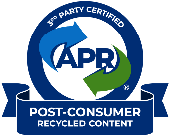How Procter & Gamble is helping to drive the circular economy
Procter & Gamble advances sustainability with a new recycling method for polypropylene, promoting reuse.
Aug. 23, 2017 - Karen Graham - Digital Journal
Proctor & Gamble is taking sustainability and the circular economy seriously, creating a new method to recycle polypropylene (PP) plastic into a "virgin-like" quality for reuse.In the World Bank's April Commodity Markets Outlook, higher prices were forecast for industrial commodities, principally energy and metals, in 2017 and next year.These problems, along with a rising population, dwindling natural resources, and supply chains becoming risky due to conflict or extremes of weather, make the concept of a circular economy more appealing to businesses as an alternative to the limits of linear growth.Basically, we're talking about making businesses sustainable by transforming from a linear economy where we make, use and dispose of materials. This sort of economy is reaching its physical limits, particularly with the electronic gadgetry being made today.proponents of a circular economy, like Procter and Gamble, see it as restorative and regenerative by design. Through technology and innovation, the aim is to keep products, components, and materials at their highest usability and value at all times. To that end, instead of throwing something in a landfill when it has reached the end of its usefulness, products are recycled to be used again.
Transforming the way polypropylene (PP) plastic is recycled and reused
Procter & Gamble made internal R&D investments in its own circular economy to find a way to recycle polypropylene (PP) plastic, which is gray or black and often smelly, in an economical and scalable way so the end-product could be reused to make other products."It started with the industry need for high-quality PP, which is used in 80 percent of nonwoven material and 20 percent in packaging," said Stephen Sikra, section head of P&G, responsible for global research and development of materials science and packaging applications."But the challenge was to find the volume that we needed, so we thought it incumbent upon us to help innovate in this technical space to take the recycling community to the next step." Sitka adds, "Our first investment was time and talent."P&G's John Layman was the one to find a solution, and it was a solvent that dissolves the plastic polymer and can be recirculated. After any "contaminants" are separated out the end-product, liquefied plastic can be produced back into pellets for consumer-grade use in electronics, construction material, food and beverage packaging and other products.PureCycle Technologies, a portfolio company of Innventure, an enterprise that firm that commercializes "disruptive" technology, patented the technology. In July this year, PureCycle and P&G celebrated the opening of the plant, located in Hanging Rock, Ohio."The demand far exceeds the capacity of this one facility — P&G can use all the output, but we have chosen to share it with others," said Sikra. As a matter of fact, the global PP market is now $80 billion and on track to meet $133 billion by 2023, according to Transparency Market Research.





-1.png)
.png)
